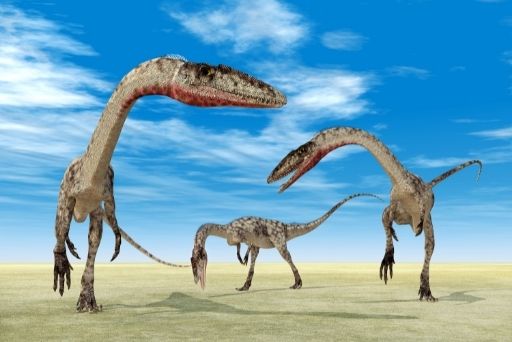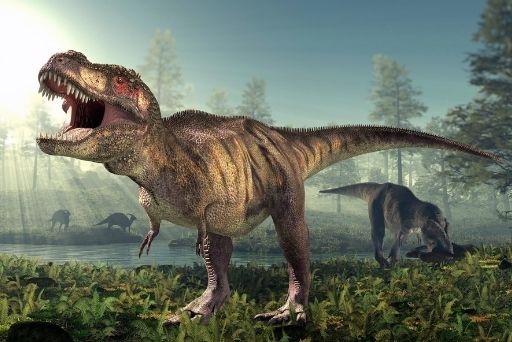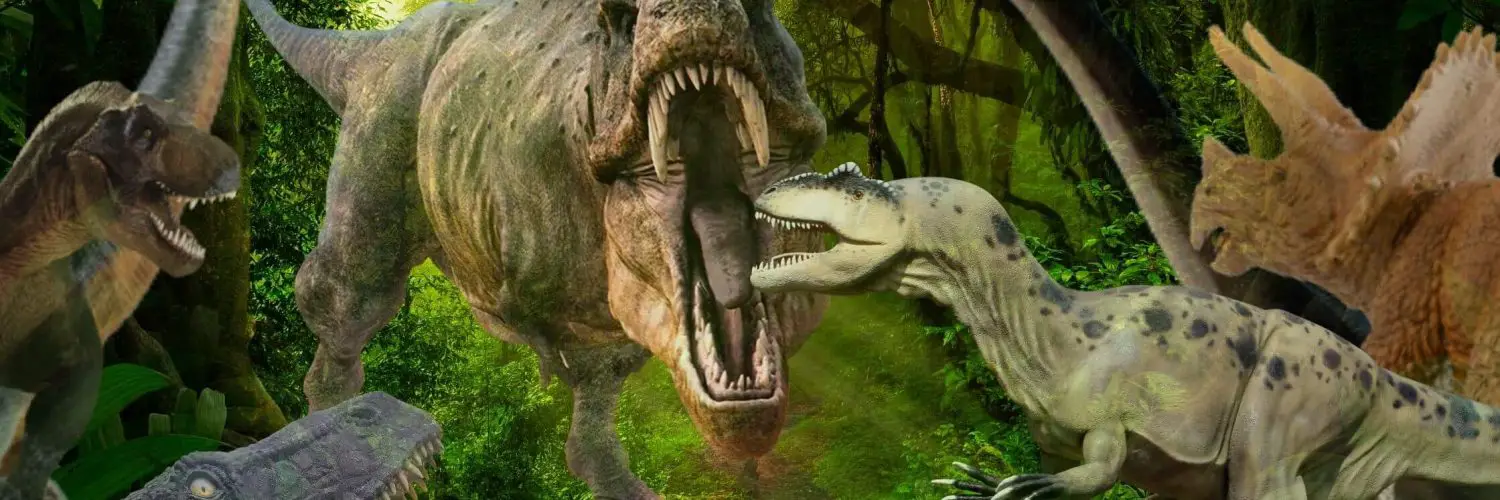The age of dinosaurs included three geological time periods – the Triassic era, the Jurassic era, and the Cretaceous era. It means that different dinosaur species lived through each of these time periods. Stegosaurus, a Jurassic dinosaur, was extinct for 80 million years before the appearance of Tyrannosaurus, which was a Cretaceous dinosaur. In fact, the time separating a Jurassic dinosaur and a Cretaceous dinosaur are more than the time separating a Cretaceous dinosaur and humans. As the Triassic period started, all the dinosaurs used to live in one supercontinent known as ‘Pangea.’ As the continent broke apart, the dinosaurs became scattered and started thriving on separate continents. As a result, new types and species of dinosaurs evolved in each geographic region.
When did dinosaurs live?
According to scientific evidence, non-bird dinosaurs lived between 245 and 66 million years ago. It was a time known as the ‘Mesozoic’ era. This was millions of years before Homo Sapiens, the first modern humans appeared. The Mesozoic era was divided into three time frames – the Triassic era, the Jurassic era, and the Cretaceous era:

The Triassic Period
The Triassic era existed some 252 to 201 million years ago. At that time, all the continents were part of a single land called Pangea. So, it is understood that the differences between plants and animals found in different regions of the continent were minor. Unlike today, there were no polar ice caps, and much of the land was covered with large dry desserts. The climate was typically hot, and it was in this environment that the dinosaurs first evolved and thrived. Dinosaurs are reptiles, and reptiles are known to flourish in hot climates as their skin is relatively less porous compared to mammal skin. As a result, reptiles lose less water in hot conditions. Their kidneys are also good at conserving water. One of the most popular dinosaur species that lived towards the end of the Triassic era was Coelophysis. A series of massive volcanic eruptions and earthquakes caused the continent to break into two. This is how the North Atlantic Ocean was formed.

The Jurassic Period
The Jurassic era existed some 201 to 145 million years ago. Towards the end of the Triassic era, there was a lot of mass extinction. The dinosaurs survived, but many large land animals perished. This gave the reptiles an opportunity to evolve, increasing in number, and transform into a wide variety of forms. The Jurassic era witnessed the growth of lush vegetation, providing plenty of food sources for herbivores. As Pangea split into two separate lands, it created Gondwana in the south and Laurasia in the north. While the separation happened, evidence shows that there were some land connections between Gondwana and Laurasia.
Nevertheless, the two continents became distinct later in the period. Because of the vegetation growth, the temperature fell significantly. However, it was still warmer as compared to today because of the significant amounts of carbon dioxide trapped in the atmosphere. The occurrence of rainfall increased, courtesy of large seas that appeared between the two continents. This resulted in plants like horsetails and ferns growing over huge areas. What’s interesting is that this vegetation became the fossil fuels that we mine today. The Jurassic era witnessed the dominance of large sauropod dinosaurs.

The Cretaceous Period
The Cretaceous era existed some 145 to 66 million years ago. During that period, the land further split up and separated into other continents that we recognize today. This gave dinosaurs the opportunity to evolve more independently in different parts of the world under different climatic conditions and become more diverse.
The Cretaceous period was an era that saw the development of other animal groups. For starters, the first snakes evolved during this period, including some flowering plants. Also, bees evolved that helped in the pollination and spread of flowering plants. The mammal groups included predators of small dinosaurs, ground dwellers, and tree climbers. Not only the land but the ocean also experienced some drastic changes. Sea levels repeatedly fluctuated during this era. As a result, there was a formation of many shallow seas that separated parts of the lands and continents we know today. Europe, for example, was formed by many smaller islands.
So, now you know that not all dinosaurs lived together!





























